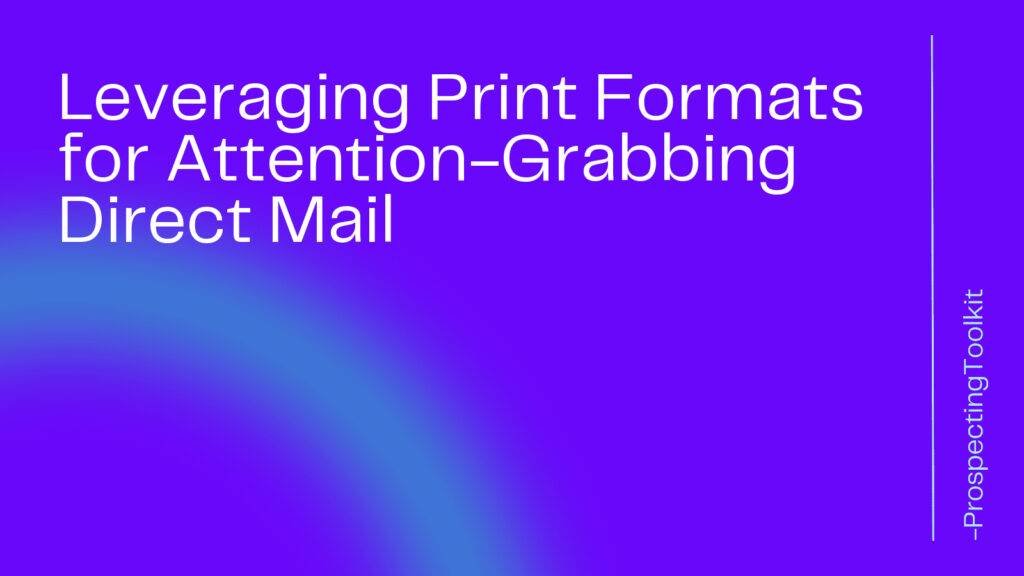A unique value proposition (UVP) is a critical component for businesses seeking to effectively differentiate themselves and stand out in the marketplace.
It is a concise statement that communicates the distinct value and benefits that a business offers to its target audience.
In today’s competitive business landscape, having a strong UVP is essential to attracting and retaining customers, boosting conversion rates, and remaining competitive.
In this blog post we’ll teach you exactly how to develop a unique value proposition for your business that increases sales and makes marketing easier.
Table of Contents
ToggleWhat is a Unique Value Proposition?
A unique value proposition (UVP) is a concise statement that communicates the unique benefits and value that your product or service provides to your target audience. It distinguishes your brand from competitors and highlights the compelling reasons why customers should choose you over others.
When crafting a unique value proposition, consider the following points:
- Identify your target audience: Understand who your ideal customers are and what they need or desire.
- Analyze your competitors: Research your competitors to find out how they position themselves and what unique aspects they offer. This will help you find gaps in the market that you can fill.
- Define your unique advantages: Determine what sets your product or service apart from others. Focus on specific features, benefits, or solutions that differentiate you from the competition.
- Use clear and concise language: Keep your value proposition simple and easy to understand. Avoid using jargon or technical terms that may confuse your audience.
- Highlight the impact or outcome: Communicate the positive results or transformation that your product or service can bring to your customers’ lives or businesses.
- Test and refine: Once you have drafted your unique value proposition, test it with your target audience to see if it resonates. Consider their feedback and make necessary revisions to improve its effectiveness.
Remember, a strong and compelling unique value proposition can be a powerful marketing tool that helps you attract and retain customers.
How to Structure Your Unique Value Proposition
To structure a unique value proposition, you can follow these steps:
Identify your customer’s problems
List down the issues or challenges that your target audience faces and consider how your product or service solves these problems.
Highlight the unique benefit
Determine the specific aspect of your offering that sets it apart from competitors. This could be a distinctive feature, a superior quality, or a unique approach.
Keep it concise
Craft a clear and concise statement that encapsulates the essence of your business. Think of it as a tweet that captures the value your product or service brings to customers.
Use a compelling headline
Start your value proposition with an attention-grabbing headline that immediately communicates the benefit your customers will receive.
Provide supporting details
Follow the headline with a sub-headline or a brief paragraph that provides more information about how your product or service fulfills the customer’s needs.
Incorporate visuals
Include relevant visuals such as photos, hero images, or graphics to complement your value proposition.
Remember, there is no one right way to structure a unique value proposition, so you can experiment with different formats and wording to find what works best for your business and industry.
What Makes a Great Unique Value Proposition
A great unique value proposition is a statement that clearly communicates the benefit a customer will receive, who the target audience is, and how the company provides this benefit in a unique way.
Here are some key elements that make a value proposition great:
- Clear and concise: A great value proposition is easy to understand and conveys the message effectively without any ambiguity or confusion.
- Customer-centered: It focuses on the customer and their needs, addressing the “what’s in it for them” and how they will benefit from the product or service.
- Unique differentiation: It highlights what sets the company apart from its competitors and why customers should choose them over others. This unique aspect can be a unique feature, quality, process, or approach.
- Memorable and compelling: A great value proposition is memorable and leaves a lasting impression on the customer. It should be compelling enough to capture the customer’s attention and make them want to learn more or take action.
- Descriptive and specific: It provides specific details about the product or service, emphasizing the key features or benefits that differentiate it from others.
- Authentic and credible: A great value proposition is authentic and credible. It should reflect the company’s values and capabilities, and be supported by evidence or testimonials if possible.
- Consistent across channels: The value proposition should be consistent across all marketing channels to maintain a strong and cohesive brand image.
To create a great unique value proposition, it is important to thoroughly understand the target audience, analyze competitors, and identify the company’s unique selling points.
This will help in crafting a compelling and differentiated value proposition that resonates with customers and sets the company apart in the market.
Examples of Great Unique Value Propositions
Slack:
“Be less busy with Slack – where work happens. Connect your team, streamline communication, and get things done faster.”
This value proposition clearly communicates the unique benefits of using Slack – it helps teams work more efficiently by providing a centralized platform for communication and collaboration. It also highlights the outcome, which is being less busy and getting things done faster.
Tesla:
“Accelerating the world’s transition to sustainable energy.”
Tesla’s value proposition focuses on their mission to create sustainable energy solutions. It conveys their unique position in the market as a company that is driving the global shift towards clean and renewable energy sources.
Airbnb:
“Belong anywhere. Unforgettable travel experiences start with Airbnb.”
The value proposition of Airbnb revolves around the idea of offering unique and authentic travel experiences. It emphasizes the sense of belonging and the ability for travelers to immerse themselves in local communities, making their stays truly memorable and different from traditional accommodations.
Examples of Bad Unique Value Propositions
Company A: “We sell products that are just like the competition but slightly cheaper!”
This value proposition fails to differentiate the company from its competitors and does not highlight any unique benefits or features. It primarily focuses on price, which may not be compelling enough for customers to choose Company A over other similar options in the market.
Company B: “We offer a wide range of products and services for all your needs!”
This value proposition is too generic and lacks specificity. It does not communicate a clear value or solve a specific problem for the customers. Without a unique selling point, customers may find it difficult to understand why they should choose Company B over other companies that offer similar products and services.
Company C: “We are the best because we have been in business for many years!”
This value proposition relies solely on the company’s longevity in the industry, without providing any concrete benefit or unique advantage. It fails to address the customer’s pain points or demonstrate how the company stands out from its competitors. Customers may question why the company’s experience alone makes it the best choice.
How to Test Your Unique Value Proposition in the Marketplace
From a customer’s point of view, evaluating each aspect of a unique value proposition is crucial to determine its effectiveness in differentiating a business from its competitors and addressing customer needs and pain points.
Here is a step-by-step guide to crafting and testing a unique value proposition:
Identify Customer Needs and Pain Points
Start by understanding the specific needs and pain points of your target customers. Conduct market research, gather feedback, and analyze customer data to gain insights into what your customers truly value and what problems they are looking to solve.
Showcase Capabilities
Once you have a clear understanding of customer needs, identify the unique capabilities or strengths of your business that can effectively address those needs. Highlight these capabilities in your value proposition to demonstrate why your solution is better than others in the market.
Differentiate from Competitors
Analyze your competitors’ value propositions to identify gaps or areas where you can differentiate yourself. Emphasize your unique selling points (USPs) that your competitors cannot offer, and ensure that these differentiators are aligned with the needs of your target customers.
Speak Your Customer’s Language
Craft your value proposition using language and terminology that resonates with your potential buyers. Use customer-centric language to clearly communicate the benefits and outcomes they can expect from your solution. Avoid jargon or technical terms that may not be easily understood by your target audience.
Test Your Value Proposition
It is crucial to test your value proposition in the marketplace to assess its effectiveness. Here are three main ways to do so:
Cold Email Campaign
Use cold emails to reach out to potential customers and gauge their response to your value proposition.
Design the email in a way that clearly explains what the email is about and what’s in it for the recipient. Monitor the open rates, click-through rates, and responses received to measure the effectiveness of your value proposition.
Customer Feedback
Put your value proposition in front of your target customers and gather their perception on it.
Conduct surveys, interviews, or focus groups to get their feedback on the clarity, relevance, and persuasiveness of your value proposition. Incorporate their suggestions and make any necessary adjustments.
A/B Testing
Create multiple versions of your value proposition and test them against each other to determine which one performs better. This can be done through online advertisements, landing pages, or even offline marketing collaterals.
Compare response rates, conversion rates, or any relevant metrics to identify the most compelling value proposition.
Remember, the less known your company is, the more important it is to have a strong and compelling value proposition.
Continuously test and refine your value proposition based on customer feedback and market insights to ensure its relevance and effectiveness.
Unique Value Proposition FAQ
What are examples of unique value propositions?
Examples of unique value propositions include innovative features or technology that set a product or service apart from competitors. For instance, Tesla’s electric vehicles have a unique value proposition of being environmentally friendly and technologically advanced. Another example is the iPhone’s iOS operating system, which offers a seamless and user-friendly experience compared to other smartphones. Zappos, an online shoe and clothing retailer, has a unique value proposition of exceptional customer service, including free shipping and a 365-day return policy. Airbnb’s value proposition lies in their ability to provide unique and personalized accommodation options around the world, allowing travelers to stay in someone’s home rather than a traditional hotel. These examples illustrate how a unique value proposition can differentiate a product or service from competitors and attract customers by offering something distinct and valuable.
How do you create a value proposition for a new product?
Creating a value proposition for a new product involves identifying the key benefits and unique features that set it apart from competitors. It requires understanding the target market’s needs and desires, and positioning the product as the solution to those needs. Effective value propositions clearly communicate the value and advantages that the product offers, and how it addresses specific pain points. They should be concise, compelling, and focused on the customer’s perspective to create a compelling reason for them to choose the product over alternatives.
How do you write a good unique value proposition?
When writing a good unique value proposition, it is important to focus on the specific benefits and advantages that set your product or service apart from competitors. Start by clearly identifying your target audience and understanding their needs and desires. Highlight the unique features and qualities that solve their problems or provide a better experience. Use clear and concise language to communicate your value proposition and avoid jargon or complicated terms. A good value proposition should be memorable, compelling, and instantly resonate with your customers.
Final Thoughts on Developing a Unique Value Proposition
In conclusion, developing a unique value proposition is crucial for the success of your business. It allows you to stand out from your competitors and effectively communicate the value you offer to your target market.
By showcasing your capabilities, understanding customer needs and pain points, and differentiating yourself from the rest of the market, you can create a compelling UVP that will attract customers and drive your business forward.
Remember, customization is key in crafting a value proposition that truly resonates with your audience.
So, take the time to research and analyze your target market and competition, and use small boosters to make your proposition even more unique.
By following these steps, you can create a strong and impactful value proposition that sets your business apart and helps you achieve your goals.







